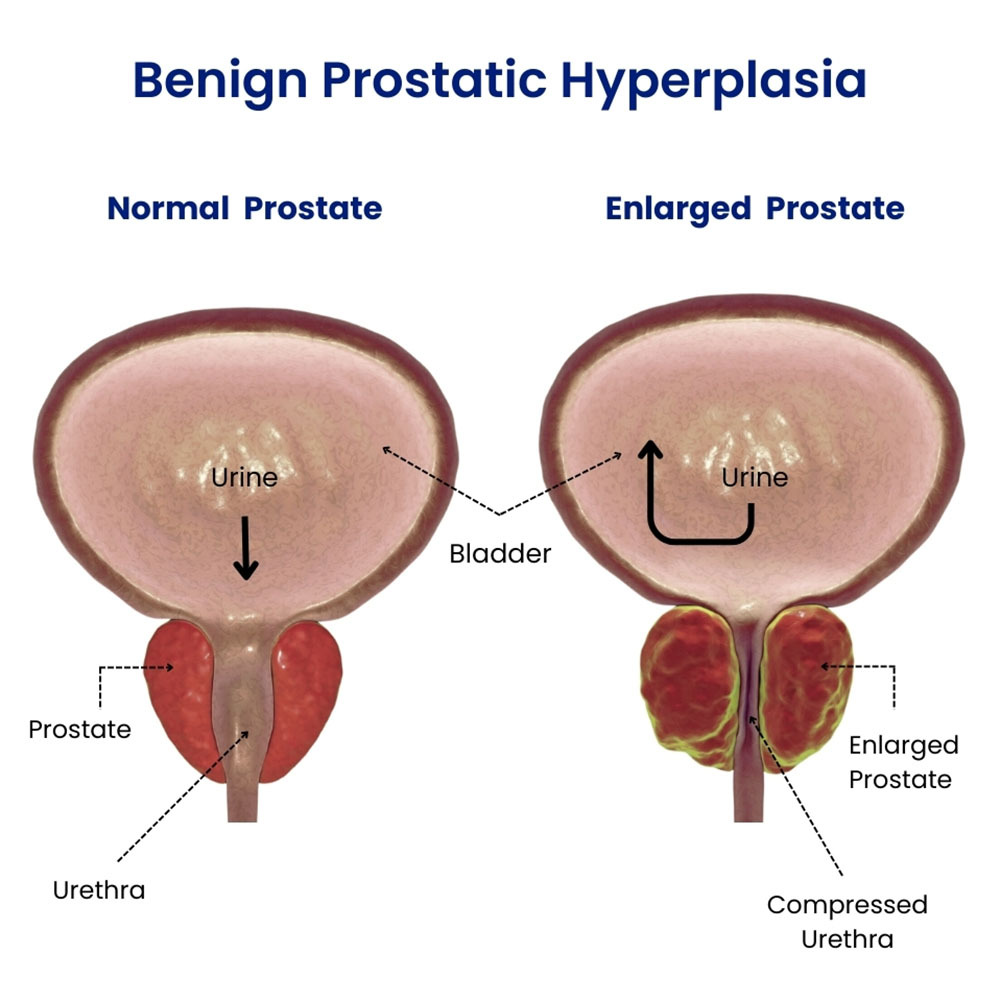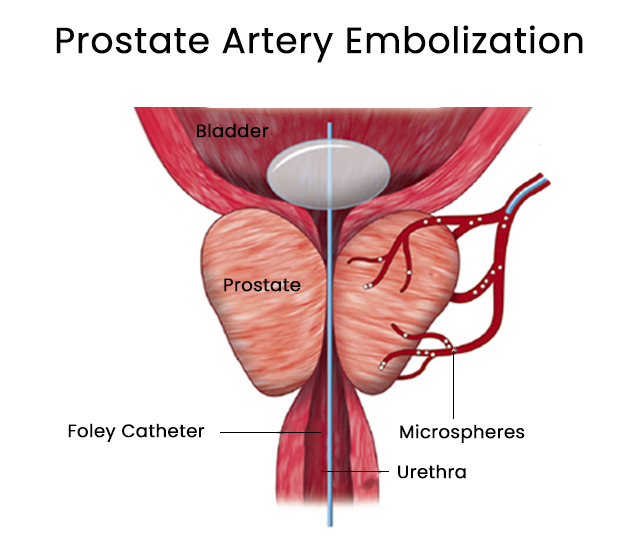An enlarged prostate gland is a common medical problem in men. A prostate artery embolization has proven to be a remarkably effective treatment for the lower urinary tract symptoms due to an enlarged prostate, also known as benign prostatic hyperplasia or BPH. It reduces the blood flow to your prostate, which shrinks the gland. For the best prostate embolization procedure, which is painless if done properly, call on the Downtown Vein & Vascular Center in Brooklyn. This practice has the expertise and the medical technology to perform this procedure flawlessly to eliminate the pain and get you back on your feet.
What Is Benign Prostatic Hyperplasia?
Benign prostate hyperplasia (BPH) is a benign, non-cancerous enlargement of your prostate gland. The urethra, the tube that eliminates urine from your bladder, runs directly through the prostate. As your prostate becomes abnormally enlarged, it may compress your urethra, leading to difficulties urinating.

Managing BPH is a complex task. Currently, several options are available to those who suffer from obstructive lower urinary symptoms, including:
- Watchful waiting, especially while your symptoms are still mild
- Medications, which are typically the first line of therapy when your symptoms become concerning
- Prostate surgery, including several options to either cut out part of the gland or remove it completely
- Prostate artery embolization, which is a non-surgical, minimally invasive approach to reduce the blood supply to the gland, causing it to shrink
What Is Prostate Artery Embolization?
Prostate artery embolization or PAE is a highly technological, minimally invasive treatment for BPH. A groundbreaking procedure, PAE provides an alternative to surgery. It cuts off the blood supply to the artery feeding blood to your prostate, reducing or eliminating your obstructive urinary symptoms. The success rate of PAE is around 90 percent.
If you’re experiencing obstructive symptoms related to hyperplasia of your prostate gland, consider consulting with Dr. Sergei Sobolevsky at the Downtown Vein & Vascular Center in Brooklyn, NY. This interventional radiologist specializes in prostatic artery embolization. He and his team use their state-of-the-art facility in Downtown Brooklyn, where they serve all of Brooklyn and greater New York City.

I highly recommend Dr. Sobolevsky for anyone seeking vein treatment. He was professional, knowledgeable, and provided excellent care throughout the process. The results were impressive and I'm grateful for his expertise.
Verified Dylan W.Why Do I Need Prostatic Artery Embolization?
Prostatic artery embolization, also known as prostate arterial embolization, is used in men with an enlarged prostate who suffer from lower urinary tract symptoms. The procedure effectively reduces the blood supply to your prostate to diminish its size, alleviating your urinary obstruction. This embolization procedure provides lasting resolution of lower urinary tract symptoms in men with BPH.
PAE is a safe and minimally invasive procedure that helps relieve symptoms associated with BPH by reducing urinary flow obstruction caused by an enlarged hyperplastic prostate. Specifically, the procedure helps relieve symptoms that include:
- Frequent urination
- A weak urine stream
- Hesitancy or difficulty starting urination
- Feeling that you didn’t completely empty your bladder
- Urinary Incontinence
- Nocturia or frequent urination at night
- Urgency, when you can’t hold your urine when you feel the urge to urinate
What Are the Benefits of a Prostate Embolization Compared to Surgery?
When it comes to improving your lower urinary symptoms, a prostate artery embolization is equivalent to traditional surgery, such as a transurethral resection of the prostate or a radical prostatectomy. Seven out of eight men report improved quality of life after a PAE due to the disappearance of their urinary symptoms.
Unlike surgery, the procedure isn’t doesn’t cause any sexual dysfunction, such as erectile dysfunction or retrograde ejaculation. In fact, the majority of men report improved sexual function following a PAE procedure. Other distinct advantages of PAE over surgery include:
- Reduced risks compared to the significant risks of surgery, including erectile dysfunction, retrograde ejaculation, pain, infection and bleeding
- A faster recovery time — you can return to normal activities on the same or next day
- No hospital stay
- No post-procedure pain
- No need for general anesthesia
How Is Prostate Artery Embolization Performed?
A prostate embolization procedure is an outpatient procedure that takes approximately two hours to complete. It generally includes a number of steps, such as:
- An arterial access is established when your doctor makes a 2-mm or 3-mm skin nick in your groin or wrist.
- A miniature catheter is navigated into the arteries supplying blood to your prostate gland.
- Your doctor then injects tiny particles into these arteries to block them, resulting in reduced blood flow to the prostate.
- The limited blood flow causes your prostate gland to shrink, relieving the symptoms of BPH.
Your doctor relies on imaging guidance to navigate through your arteries to your prostate. Prostate embolization often provides a long-term solution for BPH symptoms.
Am I a Suitable Candidate for PAE?
When you visit Dr. Sobolevsky in his Brooklyn office, the doctor assesses your medical history and performs a physical examination to determine if you’re a suitable candidate for prostatic arterial embolization. You may need to undergo diagnostic tests — such as an MRI, CT scan or angiogram — to confirm the severity of your enlarged prostate gland.Prostatic artery embolization may be an ideal procedure for you. It’s especially good for:
- Poor surgical candidates due to associated medical problems
- Patients who’ve had prior surgeries that may complicate additional surgery
- Patients with urinary retention problems who have a bladder catheter despite treatment
- Patients with hematuria or blood in the urine
- Patients with large prostate glands that are larger than 50 grams
What Is the Recovery after Prostate Artery Embolization?
Prostate arterial embolization is an outpatient procedure, so there is virtually no recovery needed. You return home on the same day and resume normal activities on the following day. In the weeks following the procedure, your prostate shrinks, and the symptoms of urinary obstruction gradually disappear.
To ensure that you receive the best possible care, contact the Downtown Vein & Vascular Center to schedule an appointment with Dr. Sobolevsky. His team offers state-of-the-art PAE treatments performed by a highly experienced and skilled interventional radiologist. The team is dedicated to providing safe, effective and individualized care.
Downtown Vein Treatment Center
480 Court Street, Ste 101
Brooklyn, NY 11231
(718) 787-5559


